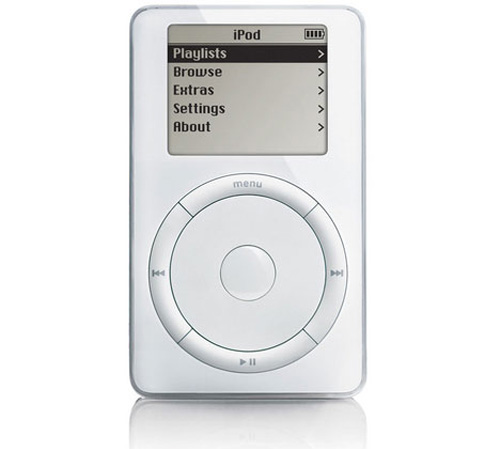An ongoing dialogue on HIV/AIDS, infectious diseases,
May 23rd, 2011
Rilpivirine Approved — the “iPod” of NNRTIs?
 From the FDA on Friday (it’s always on Friday, isn’t it):
From the FDA on Friday (it’s always on Friday, isn’t it):
FDA approved Edurant (rilpivirine) 25 mg tablets, a new non-nucleoside reverse transcriptase inhibitor (NNRTI) for the treatment of HIV. Rilpivirine is an antiviral drug that helps to block reverse transcriptase, an enzyme necessary for HIV replication. The recommended dose of rilpivirine is one 25 mg tablet once daily taken orally with a meal.
This approval comes as little surprise, as the large ECHO and THRIVE studies clearly demonstrated that rilpivirine (RPV seems to be the preferred abbreviation) was “non-inferior” to efavirenz as initial therapy.
More controversial were the details of the aggregate study results, which demonstrated a trade-off between antiviral activity at high viral loads (which favored efavirenz) and the overall safety and tolerability (which favored rilpivirine).
So how will clinicians use the drug?
The answer may be like the debate about iPods (and CDs vs records before that, boy I am showing my age): Audiophiles knew that the compressed sound required for iPods led to inferior sound, but the new devices were so easy to use that in most cases it didn’t really matter. Today CDs are rapidly on their way out.
So is RPV the iPod of NNRTIs? Both better and worse than current options? Maybe — that would be the best case scenario.
But if the complete iPod effect is going to take place, we probably need the single-tablet formulation of TDF/FTC/RPV, which is currently under development.
Categories: HIV, Infectious Diseases, Patient Care
Tags: antiretroviral therapy, HIV, iPod, nnrtis, rilpivirine
You can follow any responses to this entry through the RSS 2.0 feed. Both comments and pings are currently closed.
2 Responses to “Rilpivirine Approved — the “iPod” of NNRTIs?”

Paul E. Sax, MD
Contributing Editor
NEJM Journal Watch
Infectious Diseases
Biography | Disclosures | Summaries
Learn more about HIV and ID Observations.
Search this Blog
Follow HIV and ID Observations Posts via Email
Archives
-
-
From the Blog — Most Recent Articles
- When AI Gets the Medical Advice Wrong — and Right November 18, 2025
- Hot Takes from IDWeek: CDC, COVID, and Two Doses of Dalbavancin November 13, 2025
- Favorite ID Fellow Consults: Johns Hopkins Edition November 7, 2025
- Two Covid Vaccine Studies — One Actionable, the Other Not So Much October 28, 2025
- What a Difference a Year Makes — with Bonus Halloween Video October 23, 2025
 NEJM Journal Watch — Recent Infectious Disease Articles
NEJM Journal Watch — Recent Infectious Disease Articles- Botulism Cases in Babies Have Been Linked to Infant Formula
- What's the Effect of Delayed Surgery for Septic Arthritis?
- Community-Acquired Meningitis: Watch Out for Klebsiella
- Observations from ID and Beyond: Hot Takes from IDWeek: CDC, COVID, and Two Doses of Dalbavancin
- Frailty Predicts Outcomes in Resistant Klebsiella pneumoniae Bacteremia
-
Tag Cloud
- Abacavir AIDS antibiotics antiretroviral therapy ART atazanavir baseball Brush with Greatness CDC C diff COVID-19 CROI darunavir dolutegravir elvitegravir etravirine FDA HCV hepatitis C HIV HIV cure HIV testing ID fellowship ID Learning Unit Infectious Diseases influenza Link-o-Rama lyme disease medical education MRSA PEP PrEP prevention primary care raltegravir Really Rapid Review resistance Retrovirus Conference rilpivirine sofosbuvir TDF/FTC tenofovir Thanksgiving vaccines zoster

Paul, a complete Ipod effect in a single TABLET would probably be an Ipad
and this is the time for disclosure regarding your business with Apple
great review!
David
Hi Paul,
Important to remind that this situation is very similar to what occurred with triple nukes (AZT/3TC/ABC and in some extension, AZT/3TC/TDF) in the past. However, the position of the expert community was very different… Despite of the quality of evidence be low, the criticism and negative feelings around the lower virologic potency of 3NRTI when compared with EFV containing ( not observed in all studies), particularly in situations of very high VL at baseline, was the main justification for a big “crusade” against the use of these very friendly ART regimens, that were virtually banished from many parts of the North and considered by many as a ” 2nd class or sub-optimal therapy”… now the “mood” seems quite different with Rilpivirnine. The potential reasons are: 1) Experts are putting more value on tolerability/side effects and are less virologically obsessive than in the past (which seems to be a positive issue in my view); 2) The major triple nuke used in the past was AZT-3TC-ABC, which was the first FDC available in the North, but composed drugs manufactired by a European-based pharma and EFV, which was not available as a full FDC at that time, were a US based product… many of yours cannot agree with this second argument based on marketing disputes, but this kind of negative propaganda based on local interests already occurred with other drug products in the past (the classical episode between oral anti-diabetic drugs – sulfonylureas (produced by a US company) versus biguanides (produced by an European company), occurred in mid 50’s, when biguanides were banished from US during more than 20 years because of an alleged high risk of lactic acidosis (later, an elevated risk of CV events was associated with sulfonylureas and today metformin (the major biguanide available for clinical use), has a better safety profile is one of the most used antidiabetic drugs, even in US)… probably , the real reason is a mix of both arguments… let see how this new history with RPV will evolve…
Marco